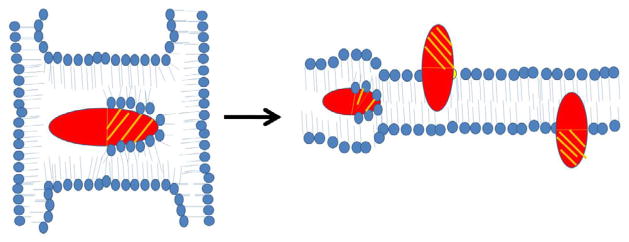Figure 3.

Schematic diagram of a model by which cardiotoxins can form inverted micelles and translocate inside lipid bilayers. Cardiotoxin can imbed inside an inverted micelle (left panel) when trapped between two liposomes or two lipid bilayers (Figure 2). Cardiotoxins can also imbed inside cell membranes to form a transient inverted micelle from which the cytotoxin translocates to either the outer or the inner leaflet of the lipid bilayer with the hydrophilic portion (shaded) exposed to the bulk solvent while the hydrophobic region (non-shaded) of cardiotoxin interacts with phospholipid tails.
